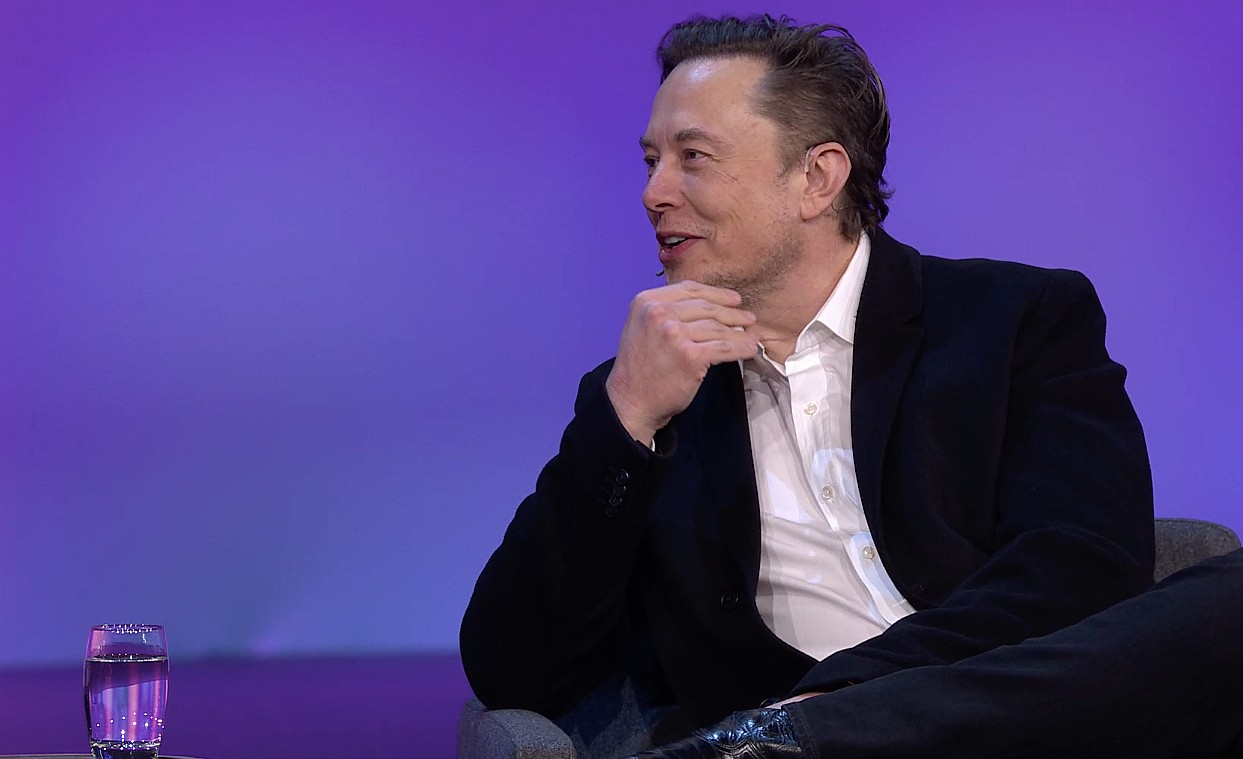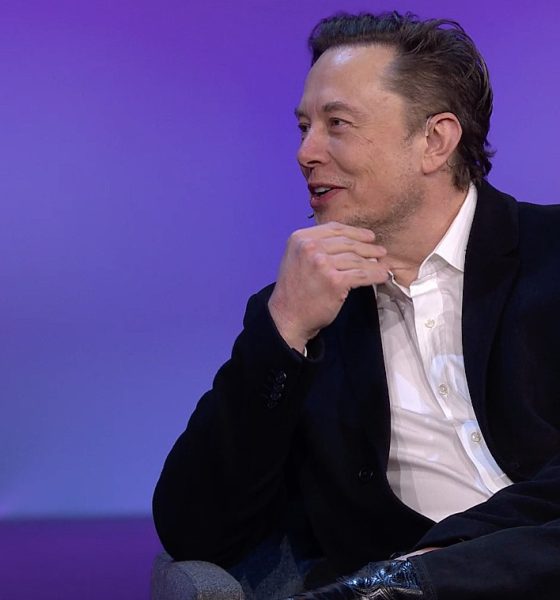Tesla CEO Elon Musk has spoken up against Wikipedia’s decision to restrict edits on its “recession” page. The definition of a recession has become quite controversial lately, amidst the Biden administration’s insistence that the United States is not in a recession.
Wikipedia, arguably the internet’s most prolific online encyclopedia, decided to block users from revising its “recession” page. This happened after visitors to the site engaged in what could only be described as an editing war over the term’s definition. A Wikipedia user even edited the page to remove references to the standard definition of a recession.
The online encyclopedia’s actions have been criticized heavily, with some accusing Wikipedia of “running interference” for the Biden administration, according to a New York Post report. Tesla CEO Elon Musk threw his hat in the ring on Friday, tagging Wikipedia founder Jimmy Wales and warning him that “Wikipedia is losing its objectivity.”
The United States has experienced its second consecutive quarter where its national economy has contracted, with the Commerce Department indicating that the country’s GDP fell by 0.9%. This typically meets the traditional definition of a recession. However, the Biden administration has refused to state that the country is in a recession.
“This is not an economy that’s in recession. But we’re in a period of transition in which growth is slowing, and that’s necessary and appropriate, and we need to be growing at a steady and sustainable pace,” Treasury Secretary Janet Yellen said.
Wikipedia, for its part, has stated that it typically places pages in “semi-protection” mode when there are significant amounts of disruption or vandalism from users. With “semi-protection” mode enabled, unregistered users and accounts that are not confirmed or autoconfirmed will be unable to make edits to a page.
“Semi-protection is useful when there is a significant amount of disruption or vandalism from new or unregistered users, or to prevent sockpuppets of blocked or banned users from editing, especially when it occurs on biographies of living persons who have had a recent high level of media interest,” Wikipedia noted.
Don’t hesitate to contact us with news tips. Just send a message to simon@teslarati.com to give us a heads up.

News
Waymo rider data hints that Tesla’s Cybercab strategy might be the smartest, after all
These observations all but validate Tesla’s controversial two-seat Cybercab strategy, which has caught a lot of criticism since it was unveiled last year.

Toyota Connected Europe designer Karim Dia Toubajie has highlighted a particular trend that became evident in Waymo’s Q3 2025 occupancy stats. As it turned out, 90% of the trips taken by the driverless taxis carried two or fewer passengers.
These observations all but validate Tesla’s controversial two-seat Cybercab strategy, which has caught a lot of criticism since it was unveiled last year.
Toyota designer observes a trend
Karim Dia Toubajie, Lead Product Designer (Sustainable Mobility) at Toyota Connected Europe, analyzed Waymo’s latest California Public Utilities Commission filings and posted the results on LinkedIn this week.
“90% of robotaxi trips have 2 or less passengers, so why are we using 5-seater vehicles?” Toubajie asked. He continued: “90% of trips have 2 or less people, 75% of trips have 1 or less people.” He accompanied his comments with a graphic showing Waymo’s occupancy rates, which showed 71% of trips having one passenger, 15% of trips having two passengers, 6% of trips having three passengers, 5% of trips having zero passengers, and only 3% of trips having four passengers.
The data excludes operational trips like depot runs or charging, though Toubajie pointed out that most of the time, Waymo’s massive self-driving taxis are really just transporting 1 or 2 people, at times even no passengers at all. “This means that most of the time, the vehicle being used significantly outweighs the needs of the trip,” the Toyota designer wrote in his post.
Cybercab suddenly looks perfectly sized
Toubajie gave a nod to Tesla’s approach. “The Tesla Cybercab announced in 2024, is a 2-seater robotaxi with a 50kWh battery but I still believe this is on the larger side of what’s required for most trips,” he wrote.
With Waymo’s own numbers now proving 90% of demand fits two seats or fewer, the wheel-less, lidar-free Cybercab now looks like the smartest play in the room. The Cybercab is designed to be easy to produce, with CEO Elon Musk commenting that its product line would resemble a consumer electronics factory more than an automotive plant. This means that the Cybercab could saturate the roads quickly once it is deployed.
While the Cybercab will likely take the lion’s share of Tesla’s ride-hailing passengers, the Model 3 sedan and Model Y crossover would be perfect for the remaining 9% of riders who require larger vehicles. This should be easy to implement for Tesla, as the Model Y and Model 3 are both mass-market vehicles.
Elon Musk
Elon Musk and James Cameron find middle ground in space and AI despite political differences
Musk responded with some positive words for the director on X.

Avatar director James Cameron has stated that he can still agree with Elon Musk on space exploration and AI safety despite their stark political differences.
In an interview with Puck’s The Town podcast, the liberal director praised Musk’s SpaceX achievements and said higher priorities must unite them, such as space travel and artificial intelligence. Musk responded with some positive words for the director on X.
A longtime mutual respect
Cameron and Musk have bonded over technology for years. As far back as 2011, Cameron told NBC News that “Elon is making very strong strides. I think he’s the likeliest person to step into the shoes of the shuttle program and actually provide human access to low Earth orbit. So… go, Elon.” Cameron was right, as SpaceX would go on to become the dominant force in spaceflight over the years.
Even after Musk’s embrace of conservative politics and his roles as senior advisor and former DOGE head, Cameron refused to cancel his relationship with the CEO. “I can separate a person and their politics from the things that they want to accomplish if they’re aligned with what I think are good goals,” Cameron said. Musk appreciated the director’s comments, stating that “Jim understands physics, which is rare in Hollywood.”
Shared AI warnings
Both men have stated that artificial intelligence could be an existential threat to humanity, though Musk has noted that Tesla’s products such as Optimus could usher in an era of sustainable abundance. Musk recently predicted that money and jobs could become irrelevant with advancing AI, while Cameron warned of a deeper crisis, as noted in a Fox News report.
“Because the overall risk of AI in general… is that we lose purpose as people. We lose jobs. We lose a sense of, ‘Well, what are we here for?’” Cameron said. “We are these flawed biological machines, and a computer can be theoretically more precise, more correct, faster, all of those things. And that’s going to be a threshold existential issue.”
He concluded: “I just think it’s important for us as a human civilization to prioritize. We’ve got to make this Earth our spaceship. That’s really what we need to be thinking.”
News
Blue Origin announces Super-Heavy New Glenn 9×4 to Rival SpaceX Starship
The announcement followed the company’s successful NG-2 launch on November 13.

Blue Origin has revealed plans to develop New Glenn 9×4, a “super heavy” rocket designed to deliver 70 metric tons to low-Earth orbit and directly compete with SpaceX’s Starship.
The announcement followed the company’s successful NG-2 launch on November 13, which deployed NASA’s ESCAPADE (Escape and Plasma Acceleration Dynamics Explorers) Mars mission and landed the first stage.
Upgraded engines and reusability
As noted in a Universe Today report, Blue Origin will roll out upgraded BE-4 engines producing 640,000 lbf each, up from 550,000 lbf, starting with NG-3. This should boost the New Glenn rocket’s total first-stage thrust to 4.5 million pounds. Upper-stage BE-3U engines are expected to improve from 320,000 lbf to 400,000 lbf over the next few flights as well.
“These enhancements will immediately benefit customers already manifested on New Glenn to fly to destinations including low-Earth orbit, the Moon, and beyond. Additional vehicle upgrades include a reusable fairing to support increased flight rates, an updated lower-cost tank design, and a higher-performing and reusable thermal protection system to improve turnaround time,” Blue Origin noted.
New Glenn “Super Heavy” 9×4
The super-heavy New Glenn 9×4, with nine BE-4s on the booster, four BE-3Us on the upper stage, will feature an 8.7-meter payload fairing. Blue Origin expects New Glenn 9×4 to be capable of transporting 70 metric tons to LEO, 14 tons to GSO, and 20 tons to trans-lunar injection, as noted by the company in a blog post. This is very impressive, as New Glenn 9×4’s capacity exceeds Falcon Heavy, SpaceX’s largest rocket available to consumers today. Falcon Heavy is capable of carrying up to 64 metric tons to low Earth orbit in a fully expendable configuration.
That being said, SpaceX’s Starship’s capacity is extremely impressive. As per SpaceX, Starship is designed to be capable of carrying up to 100-150 metric tonnes to orbit in its fully reusable configuration. At its expendable configuration, Starship’s capacity enters unheard-of territory, with SpaceX stating that the vehicle could transport 250 metric tonnes of cargo.











